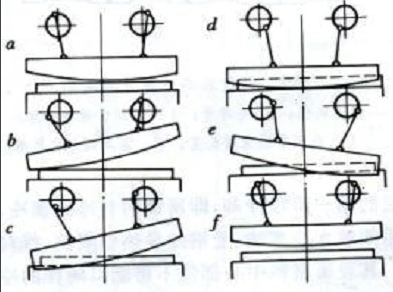
Sheet metal processing is actually the processing of metal products, which is used in various places after the transformation of metal plates. Processing methods include stamping, cutting and other methods, mainly changing the metal properties and shape. Today, let's talk about several common blanking methods in sheet metal blanking. Let's understand it together! --Shearing Manufacturing
Machining Scope:Precision Laser Cutting, Fiber Laser Cutting, CNC Robot Bending, Riveting, Welding, Broaching, Drilling, Tapping, CNC Machining, Metal Finishing, Assembling etc.
Shearing Technology
1) Scope of Application:
1. This code is applicable to the shearing of material blanks with straight edges of various ferrous metals and other similar blanking.
2. The basic thickness of the material to be cut is 0.5 ~ 6 mm, and the maximum width is 2500 mm.
2) Shearing Material:
1. Materials shall meet the requirements of technical conditions.
2. The material is cold-rolled steel plate, and serious scratches, slip marks, impurities and rust spots on the surface are not allowed.
3) Equipment, Process Equipment and Tools:
1. Board, pliers, oil pot, screwdriver and hammer.
2. Vernier caliper, outside micrometer, steel ruler, steel tape, square ruler and scratch needle.
4) Process Preparation of Shearing Machine:
1. Be familiar with drawings and relevant process requirements, and fully understand the geometric shape and size requirements of processed parts.
2. Receive materials according to the requirements of the drawings and material specifications, and check whether the materials meet the requirements of the process.
3. In order to reduce consumption and improve the utilization rate of materials, it is necessary to calculate reasonably and adopt the nesting method.
4. Stack the qualified materials next to the machine tool in order.
5. Add oil to each oil hole of the plate shear. Check whether the blade of the shearing machine is sharp and firm, and adjust the blade gap according to the sheet thickness.
5) Technological Process of Shearing Machine:
1. Firstly, measure the distance between the knife edge and the two breaks of the retaining plate with a steel ruler
2. During start-up trial cutting and feeding, pay attention to that all sides of the sheet are perpendicular to each other. Production can be carried out only after the first article inspection meets the provisions of the process card, otherwise the vertical and horizontal baffles shall be readjusted.
3. The auxiliary personnel should cooperate well, check the size, burr and angle at any time during the processing, and contact the operator in time.
4. The cut semi-finished products or finished products shall be stacked neatly according to different specifications, and shall not be placed randomly, so as to prevent specification mixing and compression deformation.
5. In order to reduce blade wear, the steel plate surface and table top shall be kept clean. It is strictly prohibited to place tools and other materials on the machine surface of the plate shear.
6. The width of the shear sheet shall not be less than 20mm.
6) Process Specification of Shearing Machine:
1. Adopt reasonable nesting method according to the production batch, first large materials and then small materials, so as to improve the utilization rate of materials as much as possible.
2. If the part is a curved part or has material grain requirements, it shall be cut according to the direction of material grain and rolling.
7) Quality Inspection:
1. For the parts with no perpendicularity tolerance noted in the drawings and process cards, the difference between the diagonals shall be measured. The difference between the diagonals ≤ 550 mm shall not be greater than 1.5 mm, and the difference between the diagonals > 550 mm shall not be greater than 3 mm (determined by the length of the short side).
2. Check the cut sheets one by one, which shall meet the requirements of process card or drawing.
